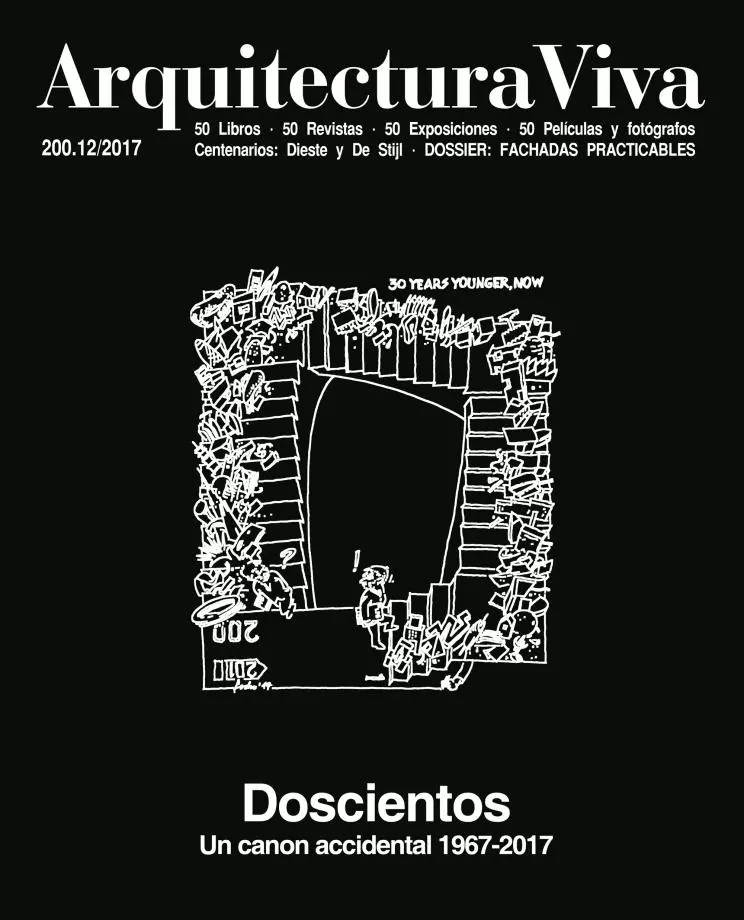
Arquitectura Viva reaches number 200, and looks back to look forward. A quarter of a century ago we published ‘Tanta teoría’, where we ventured the list of the 25 most influential books since the release of The Architecture of the City and Complexity and Contradiction in Architecture 25 years before. Now we extend that list up to 50 books, and complement the selection adding 50 magazines, 50 exhibitions, and 50 films or photographers to make up a group of 200 elements that we propose as an ‘accidental canon’ of architectural communication: a cautious, skeptical canon, because it comes from a necessarily partial experience, and from an at once scattered and random intellectual biography. The nod to Harold Bloom’s literary canon is a tribute to that cartographer of influences, and also a hushed reference to the anxiety caused as much by filiation as by genealogical trees.
From this tangled net of knots and threads we have excluded buildings and projects; the events that leave behind permanent or ephemeral architectures; the competitions that mark the pulse of the moment; the prizes that sanction or promote careers; and the celebrations or anniversaries, except when they leave in their wake books or exhibitions that throw new light on works and authors. The 200 elements are thus extracted from publications – books or journals, including digital ones –, shows and their catalogues, where arts related to architecture occasionally appear, and the world of the image through cinema and photography, because the conventionally defined as seventh and eighth art have had a decisive influence on the first. All this does not exhaust the field of communication, but perhaps helps to place a few milestones to serve as guide and reference.
Among these milestones, perhaps the one most unanimously accepted is that of the books by Aldo Rossi and Robert Venturi mentioned above, the publication of which marks the boundary of this retrospective glance, because it was probably around that time that the certainties of modernity collapsed, driving architecture into an intellectual and aesthetic terra ignota. I do not know if, as Focho suggests in our cover drawing, we are younger now than thirty years ago when the magazine was launched, or than fifty years ago when some of us began our careers in a challenged discipline.
We would like to think that the path followed leads somewhere, and yet it is possible that, as it happens in Escher’s stairs, after a trying ascent we end up right where we started. It is a melancholy thought, but perhaps Bob Dylan’s lyrics have it right, and in spite of it all we are ‘younger than that now.’






